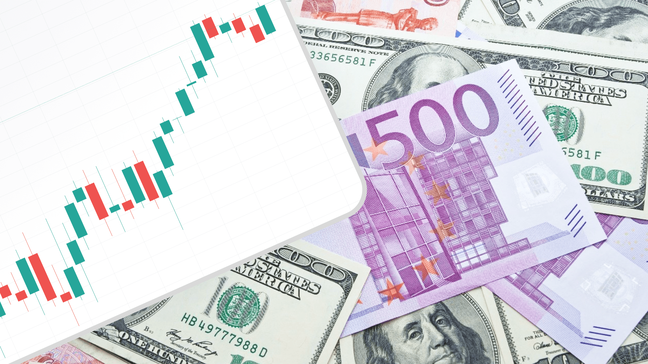Having portrayed an optimistic day for the risk-takers, global markets appear slightly inactive ahead of the key US inflation data early Thursday. Even so, fresh concerns about the US Federal Reserve’s (Fed) rate cuts exert downside pressure on the US Dollar ahead of the headline Consumer Price Index (CPI).
While Fed Chair Jerome Powell’s Testimony could be held responsible for the US Dollar’s latest fall, the EURUSD manages to cheer hawkish comments from the European Central Bank (ECB) officials and mixed data. In doing so, the Euro pair fails to justify political pessimism at home. Further, mostly upbeat UK data and political optimism due to the Labour Party’s victory propel GBPUSD toward refreshing the monthly high.
USDJPY and NZDUSD buck the trend amid mixed concerns about the respective central banks of Japan and New Zealand, not to forget unclear data at home, whereas AUDUSD and USDCAD cheer softer US Dollar and upbeat economics at home. Additionally, Crude Oil marked a stellar run-up on inventory figures and demand-supply expectations whereas Gold price benefits from its traditional haven status.
Elsewhere, BTCUSD snapped a three-day winning streak on fund transfers from the German Government and Mt. Gox. However, ETHUSD cheered the US Commodity Futures Trading Commission (CFTC) Chair Rostin Behnam’s comments ruling out BTCUSD and ETHUSD as securities while terming them, “digital commodities”. It’s worth noting that the on-chain data suggests a slower accumulation of Bitcoin and helped the BTCUSD to pare previous losses early Thursday.
Following are the latest moves of the key assets:
- WTI Crude oil defends the previous day’s rebound from a fortnight low while posting mild gains around $82.60 by the press time.
- Gold rises for the third consecutive day, up 0.30% intraday to $2,380 at the latest.
- The USD Index remains pressured around 105.00 after snapping a two-day winning streak the previous day.
- Wall Street closed with notable gains and helped the Asia-Pacific shares to edge higher. That said, equities in Britain and Europe print minor gains during the initial trading hour.
- BTCUSD and ETHUSD both remain mildly bid around $58,000 and $3,110 respectively as we write.
Fed rate cut concerns weigh on US Dollar…
In his second round of Semi-Annual Testimony, Fed Chair Jerome Powell reiterated the hopes of witnessing softer inflation and cleared the path for odds favoring the rate during late 2024. The policymaker also said, “Fed does not want to wait until inflation reaches all the way down to 2% to ease policy.”
Following Powell’s Testimony, Wall Street Journal’s Nick Timiraos backed the dovish Fed bias and the US Dollar bears, which in turn helped Wall Street to remain firmer. WSJ’s Timiraos said, “When inflation turned up in the first quarter and the economy showed solid growth, the justification for lower rates crumbled. But when Powell returned to Capitol Hill this week, he began laying the groundwork for rate cuts on what could prove to be a stronger footing.”
It’s worth noting, however, that Federal Reserve Governor Lisa D. Cook defended the policy hawks by conveying hopes of the US soft landing. Fed’s Cook also mentioned that she is "very attentive" to what is happening with the unemployment rate, and would be responsive if the situation changes quickly.
In reaction to Powell’s Testimony, the US Dollar marked the first daily loss in three while the Wall Street benchmarks soared. The same helped EURUSD to reverse Tuesday’s fall and renew advances toward the monthly high marked around mid-1.0800s.
Elsewhere, the GBPUSD rose to a fresh high in July, refreshing the monthly peak early Thursday, as hawkish statements from the Bank of England (BoE) official joined softer US Dollar and political optimism in the UK. That said, BoE’s Chief Economic Huw Pill cited uncertainty around UK wage data while also adding, “Services and wages continue to point to uncomfortable strength in inflation.” It should be noted that the UK’s monthly data dump flashed mixed results as monthly Gross Domestic Product (GDP) marked upbeat growth in May whereas Industrial Production and Manufacturing Production failed to show a clear picture for the stated month.
USDJPY bucks the trend while defending the pair buyers despite lacking upside momentum at the highest level in a week. The Yen pair’s strength could be linked to the bond market anxiety in Japan and the downbeat data from Tokyo. Earlier in the day, Japan’s Core Machinery Orders posted -3.2% MoM figures versus 0.8% expected. On the same line, NZDUSD also dropped heavily and failed to justify the US Dollar’s weakness amid the Reserve Bank of New Zealand’s (RBNZ) dovish halt. The Kiwi pair, however, recovered early Thursday as New Zealand’s Food Price Index for June rose 1.0% MoM versus -0.2% prior.
That said, AUDUSD rose to the highest level in six months as the broadly weaker US Dollar joined the fresh hawkish bias about the Reserve Bank of Australia (RBA) after mostly unchanged Aussie inflation expectations. That said, Australia’s Consumer Inflation Expectations for July eased to 4.3% YoY versus 4.4% prior.
USDCAD sellers gained double advantage amid firmer Crude Oil prices and a softer US Dollar as they poked the 6.5-month-old rising support line. However, a corrective bounce ahead of the key US data again prods the pair bears afterward.
WTI crude oil marked a stellar recovery from a two-week low the previous day, by posting the biggest daily gains since July 01, as a higher-than-expected draw in the weekly US oil inventories joined OPEC’s static demand forecast. Also likely to have helped the energy prices were headlines suggesting softer oil productions from Russia and OPEC in June.
Gold Price prints a three-day winning streak while reversing the week-start fall as sluggish markets, softer US Dollar, and yields direct traders toward the traditional haven.
- Strong buy: USDCAD, USDJPY, US Dollar, Silver
- Strong sell: AUDUSD, NZDUSD, GBPUSD
- Buy: BTCUSD, ETHUSD, Nasdaq, Gold, DJI30, USDCNH
- Sell: DAX, FTSE 100, EURUSD, Crude Oil
Focus on US CPI, US President Biden’s speech…
As the economic calendar appears mostly silent outside the US, with only the UK NIESR GDP Estimate for three months to June, the market momentum is likely to remain lackluster ahead of the North American trading session.
That said, the headline US CPI is likely to ease to 3.1% YoY from 3.4% prior but the monthly figures might defend the US Dollar if matching 0.1% expectations versus 0.0% previous readings. Further, the forecasts for the Core CPI appear uninteresting with the figures likely being unchanged to 0.2% MoM and 3.4% YoU for June. An expected softening in the US Jobless Claims might also stop the Greenback sellers.
Overall, the US Dollar is due for a recovery but the buyers need strong inflation data and upbeat employment conditions to reverse the previous weekly loss.
May the trading luck be with you!




